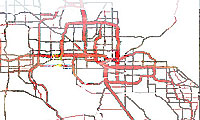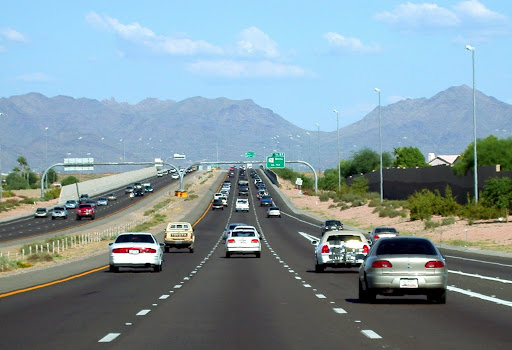Travel demand models help plan for the future
Travel demand models help plan for the future
Travel demand models help plan for the future
Travel demand models help plan for the future

Travel demand models give planners an idea of what future traffic patterns might look like.
Short of a time machine, travel demand models might just be the next best thing for taking a glimpse at the future of our transportation system.
So, what is a travel demand model?
Technically speaking, travel demand models are planning analysis tools that use statistical, econometric and mathematical algorithms to represent transportation system conditions and predict travel behavior response to those conditions.
Less technically speaking, a travel demand model consists of a series of interlinking computer programs that use statistics and demographic information to forecast current and future transportation system conditions.
That means ADOT can plug in data -- info like how many people live and work in various communities -- and the model will forecast the trips taken by drivers and transit passengers, where they’re going and what roads and transit services are being used. Basically, it gives planners a good idea of what future traffic patterns might look like and traffic’s impact upon air quality. (You might remember we talked before about modeling and predictions related to air quality.)
“It’s a planning tool that we use to anticipate traffic changes,” said Keith Killough, ADOT’s assistant director for travel demand modeling and analysis, adding that the model gives the decision-makers the information they need to make informed choices on transportation policies, plans, projects, and programs.
That’s because the model can actually run “what-if” scenarios by taking proposed changes (things like extra lanes, tolls, or new freeways) into account and give planners a realistic idea of what the alterations will do to traffic. This helps ADOT make decisions without costly trial and error implementations. In the past, planners had to rely solely on trend projections which generally do not consider capacity and growth constraints.
According to Killough, the key to better, accurate modeling results is to start with better, accurate data. He works closely with the Arizona State Demographer’s Office (in the Department of Administration) and utilizes data and assistance from throughout ADOT (particularly ITD, MVD, TSG, and ITG). Household statistics, employment data, travel surveys and more are taken into consideration.
The travel demand model is based on a lot of data and many different fields of science …
“It is complex, but still a very educated guess,” Killough said.
To make sure the model is producing the most accurate complete picture possible, the results are regularly checked and validated. Traffic counts help with this process.
For even more on how ADOT uses travel demand modeling, check out the Average Annual Daily Traffic (AADT) page.



